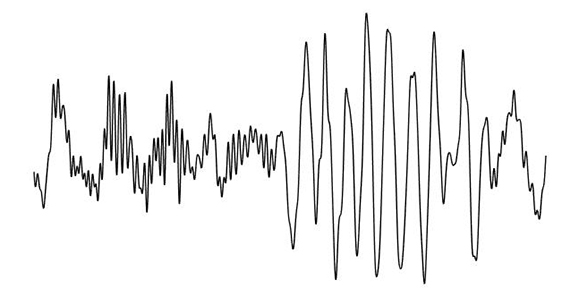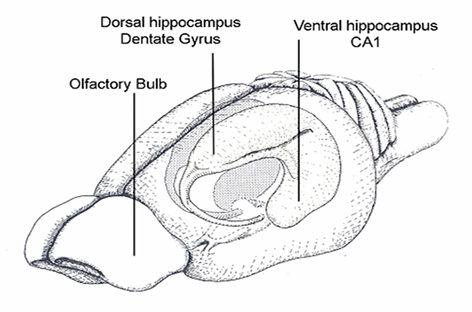- Olfaction in Context
- Collaborators
 How does an animal perceive a sensory stimulus? To address this question, our research focuses on the neural basis ofolfactory perception and how context and experience influence it. Experiments involve both behavior and electrophysiology and concentrate on the rodent (rat and mouse) olfactory and limbic systems.
How does an animal perceive a sensory stimulus? To address this question, our research focuses on the neural basis ofolfactory perception and how context and experience influence it. Experiments involve both behavior and electrophysiology and concentrate on the rodent (rat and mouse) olfactory and limbic systems.
Our behavioral studies examine the effects of odorant chemical structure, receptor biophysics and prior experience on olfactory sensation and perception.
Current and recent electrophysiology projects utilize single cell, multi-cell, and population recordings in one or more of the olfactory bulb, amygdala, prepyriform cortex,
entorhinal cortex, and hippocampus, while animals perform simple and complex olfactory discrimination tasks.  We also study the changes in neural representations when the meaning of a stimulus changes. We have shown that activity from the hippocampal system and other parts of the limbic system
strongly influence that seen in the most peripheral structure of the olfactory CNS, the olfactory bulb. This influence is seen at the level of single neurons and in the oscillatory coupling
of small to large groups of neurons, dependent on the difficulty of the odor discrimination task. This modulation is associated with changes in oscillatory state (gamma or beta oscillations) and
functional connectivity among parts of this highly distributed and interconnected system, and these changes can be driven by synaptic and neuromodulatory inputs from central brain areas,
as well as changes in sniffing behavior. Thus, the personal internal and behavioral states of an animal can influence sensory processing at a very early stage.
We also study the changes in neural representations when the meaning of a stimulus changes. We have shown that activity from the hippocampal system and other parts of the limbic system
strongly influence that seen in the most peripheral structure of the olfactory CNS, the olfactory bulb. This influence is seen at the level of single neurons and in the oscillatory coupling
of small to large groups of neurons, dependent on the difficulty of the odor discrimination task. This modulation is associated with changes in oscillatory state (gamma or beta oscillations) and
functional connectivity among parts of this highly distributed and interconnected system, and these changes can be driven by synaptic and neuromodulatory inputs from central brain areas,
as well as changes in sniffing behavior. Thus, the personal internal and behavioral states of an animal can influence sensory processing at a very early stage.
Techniques include operant behavior, local field potential recording and analysis of oscillatory signals, multi- and single unit neural recording and analysis, optogenetic activation and inactivation, computational modeling, and pharmacological manipuations.
